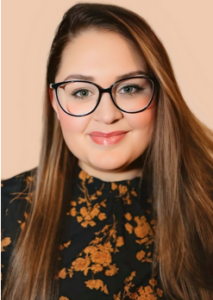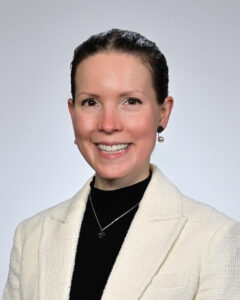Authors: Rhea Manohar, MPH; Meghan Etsey, Ariela Marshall, MD —- on behalf of AMWA Gender Equity Task Force
When discussing physician burnout, long shifts and administrative burdens are often cited as reasons why physicians decide to exit the workforce. For many female physicians, burnout is exacerbated by the ingrained societal expectations around caregiving both in the clinic and also at home, leading to greater risk of burnout. Traditionally, women have been considered the primary caregiver in the household. While some caregiving responsibilities have become more equitable between women and their partners over the years, many women still find themselves as primary supporters/caregivers for their families after a full day of work (Lyubarova et al., 2023). As medical school graduation rates reach gender parity, it is critical that the medical community focus on not only fostering future female physicians, but also retaining those who are already within the workforce (Sullivan et al., 2023).
Understanding the impact of the caregiving duties on female physicians begins with recognizing the difference in the care provided by female physicians compared to their male counterparts. On average, research has shown that women physicians spend significantly more time per patient. It has been observed that in many cases, these physicians often delve into psychosocial complexities and offer emotional support for their patients while also shouldering additional administrative tasks (Lyubarova et al., 2023). On top of this women disproportionately manage household duties and childcare outside the clinic—even in dual-physician households (Sullivan et al., 2023). These concurrent professional and domestic demands create a chronic state of role overload that contributes to high burnout rates among women physicians (Lyubarova et al., 2023; Sullivan et al., 2023). This emotional, physical, and financial strain related to the duality of caregiving responsibilities has been termed “double-duty caregiving,” and is a critical factor in understanding why 40% of women physicians may choose either to drop to part-time or leave the medical field earlier than expected (Apple et al., 2023; Meese et al., 2023).
During the height of the COVID-19 pandemic, these burdens for women physicians intensified. Women were more likely to assume caregiving responsibilities at home—including navigating school closures, childcare, or household logistics—while carrying on with clinical duties during unusually taxing circumstances (AMA survey; Time, 2019; Axios, 2024). For many women, the lack of flexibility in the workplace and lack of organizational support led to increased feelings of exhaustion, which has persisted in the years since the pandemic (Farid et al., 2024). This has led to dramatic acceleration of burnout in women physicians, even young physicians just entering the workforce (AMA survey; Time, 2019; Axios, 2024).
Beyond individual caregiving responsibilities, women physicians experience additional challenges and hurdles in the workplace compared to their male counterparts. These include slower promotions and lower representation in leadership, which are compounded by persistent pay gaps—even after controlling for specialty and hours worked (Sullivan et al., 2023). Parenthood and periods of parental leave, regardless of duration, are frequently penalized: “maternal wall” bias assumes caregiving reduces professional commitment, influencing hiring and scheduling decisions (Sullivan et al., 2023). One study estimated up to 80% of women physicians who are or will become mothers may experience discrimination purely based on their motherhood status. While this varies based on the institution and stage of career, this highlights a concerning trend in which women are often overlooked or subject to unconscious bias due to the duality of their caregiving roles (Halley et al., 2018).
For women physicians, overcoming burnout is grounded in modifying and enhancing organizational/systemic support to better suit the needs of the physicians that these organizations employ. Many academic health centers lack onsite childcare. A 2022 cross-sectional study found only 62% offered childcare, most in the Midwest (78%), while the Southwest lagged at 14%—regardless of the percentage of women faculty (French et al., 2022). In recognition of the role that affordable and accessible childcare provides in supporting physician trainees and staff, the AMA has advocated for onsite childcare and childcare subsidies (AMA, 2021). Beyond providing childcare within medical facilities, flexible scheduling, protected lactation time, parental leave policies, and roles such as medical scribes also help reduce workload and allow physicians to better integrate personal and clinical responsibilities (Stonnington & Files, 2020). Understanding the interplay between support for motherhood duties and patient caregiving responsibilities is critical to decreasing the burnout and attrition rates for these women.
Additionally, mentorship continues to play a critical role in both personal and professional development for women physicians. Senior physicians who have navigated similar caregiving-role tensions can play a vital role in mentoring younger physicians by providing resources and support, including knowledge transfers, advice on work-life balance, and advocacy for needs. Organizations can also support female physicians by offering coaching and peer support networks to help mitigate emotional fatigue and imposter syndrome. While supporting female physicians in the duality of their caregiving responsibilities is important, these practices need to go hand in hand with normalizing caregiving roles across all genders and reducing unconscious biases by encouraging male physicians to utilize flexible and parental leave policies (Sullivan et al., 2023).
Changes in policy are necessary to support physicians, including policies specifically aimed at reducing burnout incurred by double caregiving roles. Early-career physicians as well as those returning from parental leave may greatly benefit from flexible scheduling and remote clinical work options that reduce the emotional and financial burdens. While providing additional secondary support can aid female physicians, broader initiatives can help dismantle the structural inequities perpetuated throughout the health workforce. Initiatives like bias training, transparent promotion criteria that account for caregiving gaps, and codified flexible scheduling can retain top talent and help decrease burnout (Sullivan et al., 2023).
Female physicians bring evidence-based, empathic care to patients every day—but the system doesn’t always return the investment. Competing demands at work and home create a caregiving double bind that impacts wellbeing, career advancement, and retention. While roots of this issue lie in broader societal expectations, health systems must respond with bold policy changes: onsite childcare, schedule flexibility, equitable parental leave, and recognition of caregiving in career advancement. Supporting women isn’t just equitable—it’s essential for a sustainable, high-performing healthcare system.
References:
- Apple, R., O’Brien, E. C., Daraiseh, N. M., Xu, H., Rothman, R. L., Linzer, M., Thomas, L., & Roumie, C. (2023). Gender and intention to leave healthcare during the COVID-19 pandemic among U.S. healthcare workers: A cross sectional analysis of the HERO registry. PloS one, 18(6), e0287428. https://doi.org/10.1371/journal.pone.0287428
- Axios. (2024, February 22). Burnout is worse for women health care workers. Axios. https://www.axios.com/2024/02/22/health-worker-burnout-women
- Farid, H., Gagliardi, E., & Atkins, K. M. (2024b, November 27). The impact of the pandemic on female physicians: “I just don’t think I will ever feel the same” – BMC health services research. BioMed Central. https://bmchealthservres.biomedcentral.com/articles/10.1186/s12913-024-11878-0#citeas
- French, V. A., et al. (2022). Provision of onsite childcare in U.S. academic health centers: What factors make a difference? Women’s Health Issues, 32(1), 74–79. https://doi.org/10.1016/j.whi.2021.08.005
- Halley, M. C., Rustagi, A. S., Torres, J. S., Linos, E., Plaut, V., Mangurian, C., Choo, E., & Linos, E. (2018). Physician mothers’ experience of workplace discrimination: a qualitative analysis. BMJ (Clinical research ed.), 363, k4926. https://doi.org/10.1136/bmj.k4926
- Lyubarova, R., Salman, L., & Rittenberg, E. (2023). Gender Differences in Physician Burnout: Driving Factors and Potential Solutions. The Permanente journal, 27(2), 130–136. https://doi.org/10.7812/TPP/23.023
- Meese, K. A., Boitet, L. M., Sweeney, K. L., Nassetta, L., Mugavero, M., Hidalgo, B., Reamey, R., & Rogers, D. A. (2023). Still Exhausted: The Role of Residual Caregiving Fatigue on Women in Medicine and Science Across the Pipeline. Journal of medical Internet research, 25, e47629. https://doi.org/10.2196/47629
- Stonnington, C. M., & Files, J. A. (2020). Burnout in women physicians: Prevention, treatment, and management. Springer International Publishing. https://doi.org/10.1007/978-3-030-44459-4
- Sullivan, A. B., Hersh, C. M., Rensel, M., & Benzil, D. (2023). Leadership inequity, burnout, and lower engagement of women in medicine. Journal of Health Service Psychology, 49, 33–39. https://doi.org/10.1007/s42843-023-00078-9
- Time. (2019, October 28). Harassment and discrimination are leading to burnout among female doctors, study says. Time. https://time.com/5709759/harassment-physician-burnout/
- Worsham, C.M., & Jena, A.P. (2025). Women live longer than men—but not in medicine. Time. https://time.com/7261514/female-doctors-longevity-gap/
About the Authors
 Rhea Manohar, MPH, MS3
Rhea Manohar, MPH, MS3
Rhea Manohar is a second year medical student from St. George’s University. She has a Masters in Public Health with a concentration in Maternal and Child Health from George Washington University Milken Institute of Public Health and a Bachelors of Science in Microbiology, Immunology, and Public Health from the University of Miami. She served as Co-VP of OB/GYN Education for St. George’s University’s Women in Medicine chapter in St. George, Grenada where she developed and implemented hands-on workshops to further reproductive health issues and bolstered medical students’ abilities to navigate physician-patient communication. Prior to medical school, she was a research associate for Fors Marsh Group, where she led qualitative and quantitative public health research and campaign development for federal agencies (e.g., CDC, NIH, DHHS, CPSC). She is also a member of the Gender Equity Task Force and Reproductive Health Coalition within the American Medical Women’s Association. When she is not pursuing medicine, you can find her reading, exploring artistic passions, and spending time connecting with friends and family.
 Meghan Etsey, MS4
Meghan Etsey, MS4
Meghan Etsey is a third year medical student from St. George’s University. She has a Bachelors of Arts in Biology and a Bachelors of Arts in Nutrition and Dietetics from Bluffton University in Bluffton, Ohio. She served as the President of the St. George’s University’s Women in Medicine chapter in St. George, Grenada where she expanded relationships with the community and worked towards educating women and helping the youth. She is also a member of the Gender Equity Task Force and Sex and Gender Health Collaborative Committees within the American Medical Women’s Association. When she is not pursuing medicine, you can find her with her friends and family on different road trips and adventures exploring the world.
 Dr. Ariela Marshall, MD
Dr. Ariela Marshall, MD
Dr. Ariela Marshall is a Harvard-trained physician and an internationally renowned advocate, career development advisor, and mentor. Dr. Marshall specializes in bleeding and clotting disorders, especially as they relate to women’s health. She has worked at Mayo Clinic and the University of Pennsylvania and currently practices part-time as a consultative hematologist at the University of Minnesota. In addition to her clinical work, Dr. Marshall is a highly respected leader, mentor, and speaker. She is an active leader with the American Society of Hematology (where she led efforts to found the Women in Hematology Working Group and currently holds seats on the Women in Heme Working Group, Committee on Communications and Media Experts Subcommittee) and American Medical Women’s Association (leading the Infertility Working Group and holding seats on the Gender Equity Task Force). She is the Chief Innovation Officer at Women in Medicine and the Curriculum Chair at IGNITEMed, which are both 501(c)(3) nonprofit organizations dedicated to promoting career development for women in medicine. She speaks regularly on a national and international scope to discuss her efforts to advance career development and mentorship for physicians, gender equity, fertility/infertility awareness, parental health and wellbeing, reproductive health and rights, and work-life integration.
